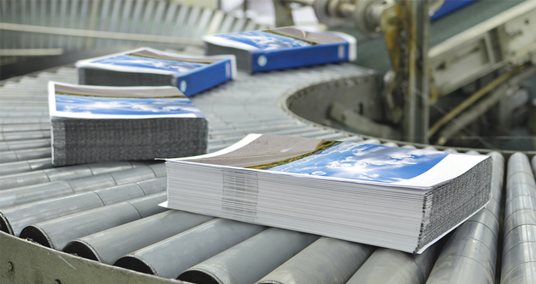-
- Some services are not accessible on a smartphone.
- Sign In
- My Account
- My Cart
- Customer Service
- Bindery Parts & Equipment | Finishing Parts Equipment | Bindery Supply
- >Blogs
- >Overcoming Perfect Binding Challenges
Overcoming Perfect Binding Challenges
It’s no question as to why many have resorted to perfect binding for their publication projects. It’s quicker, easier, and more affordable! While this method was originally designed to be performed on more heavy-duty projects, it has become the go-to option for projects that require quick turnaround time and have shorter page counts. Now perfect binding can be done to books with 32 pages or less, which has caused machines to be used in a whole new way. Since the perfect binding process has evolved, there are a number of new challenges that have arisen for the bindery and operator. Take note of the following challenges and how to combat them so that you can make sure your next perfect binding project is done the right way, free of hassle and error.
Layout Challenges
Miscommunication in the early stages can cause mistakes in a publication. Before even starting the binding process, the following layout details should be implemented:
- The number of pages should be even and divisible by two.
- The grain should be parallel to the spine on the paper stock while printing and binding.
- Design should be within the same signature to avoid cross-overs.
- Glue traps should be used to keep glue from escaping when it is applied to the spine.
Stock Thickness Challenges
Page and cover stock thickness can have an impact on the speed of a perfect binding machine. A thick book calls for slower speed and increased accuracy when setting up the trimmer, so it is critical to know the exact thickness and type of stock of your pages for proper set-up. Since they’re thinner than folded signatures, we recommend not using 2-page sheets on the perfect binder in order to avoid the operator having to slow down the binder speed, which could lead to inconsistencies.
Glue Challenges
There are a number of challenges with glue adhesion when glue comes into play. Most issues occur when non-absorbent coatings and inks are used in the spine and side glue adhesion areas. The best solution to this problem is PUR adhesive, which has the best holding strength compared to other adhesives.
Perfect Binding Automation
In a world of quicker and more condensed projects, automation is something many industries have started to rely on. The same goes for perfect binding machines. The decrease in overall page count and turnaround time of publications has forced perfect binding machines to become more automated with improved software and technology. Machines can now run faster and on their own much more efficiently than they did many years ago. Many of these machines now have touchscreen technology to guide operators through a step-by-step process to avoid human error. While there may always be challenges with the perfect binding process, new and improved perfect binding machines have been able to rid of many of these problems. Thanks to automation, perfect binding is easier than ever before.
At Update Ltd, we carry replacement parts to help your machine run like new. We sell the best replacement parts for perfect binding machines such as cover scoring, milling heads, milling guides, spine glue, trimmer knives, and press pads. Call us today to purchase! 1-800-229-0009.

